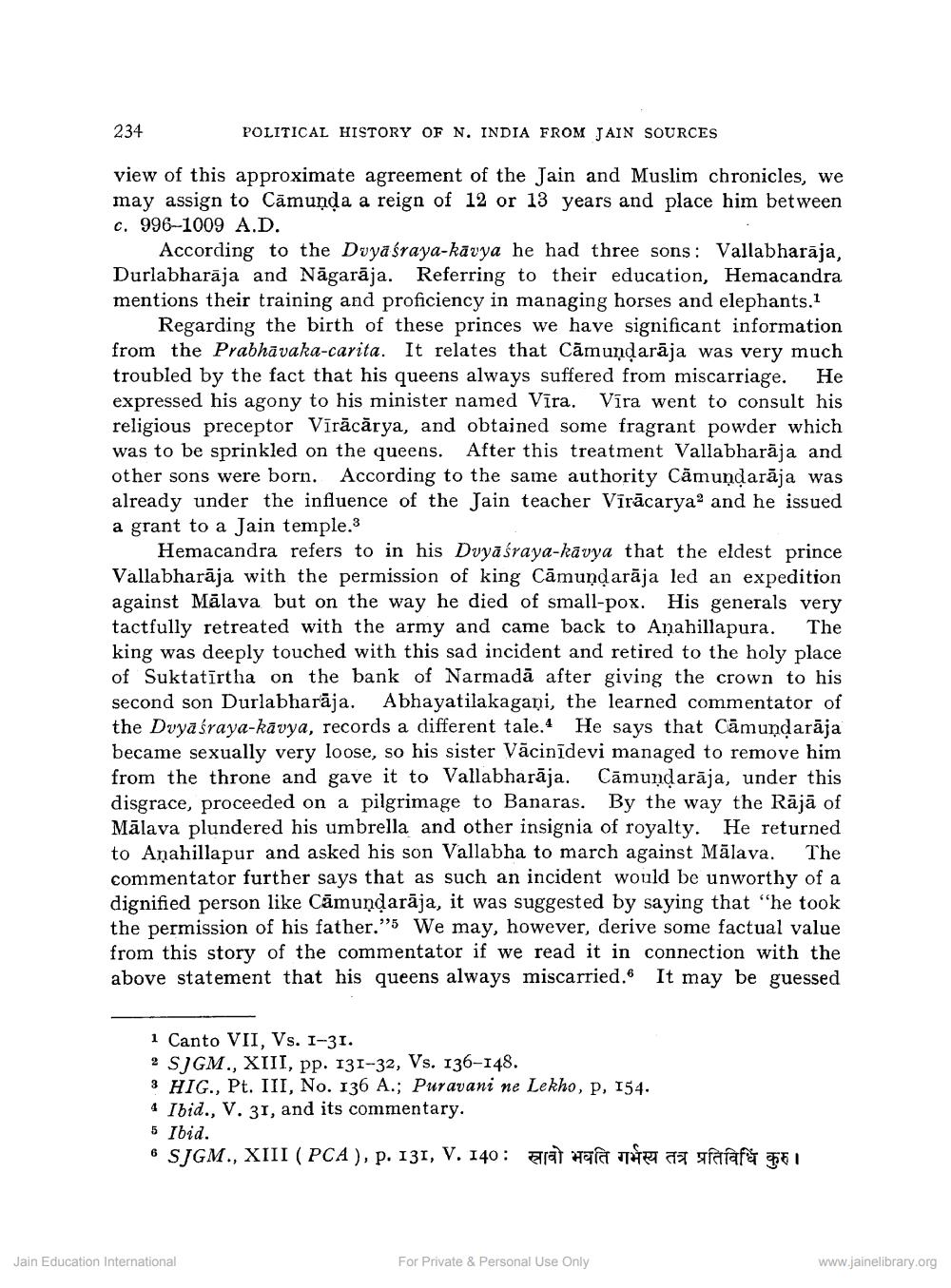________________
234
POLITICAL HISTORY OF N. INDIA FROM JAIN SOURCES
view of this approximate agreement of the Jain and Muslim chronicles, we may assign to Cāmunda a reign of 12 or 13 years and place him between c. 996-1009 A.D.
According to the Dvyasraya-kavya he had three sons: Vallabharāja, Durlabharāja and Nāgarāja. Referring to their education, Hemacandra mentions their training and proficiency in managing horses and elephants.1
Regarding the birth of these princes we have significant information from the Prabhāvaka-carita. It relates that Cāmundarāja was very much troubled by the fact that his queens always suffered from miscarriage. He expressed his agony to his minister named Vīra. Vīra went to consult his religious preceptor Vīrācārya, and obtained some fragrant powder which was to be sprinkled on the queens. After this treatment Vallabharāja and other sons were born. According to the same authority Cāmundarāja was already under the influence of the Jain teacher Vīrācarya? and he issued a grant to a Jain temple.3
Hemacandra refers to in his Dvyāśraya-kavya that the eldest prince Vallabharāja with the permission of king Cāmundarāja led an expedition against Mālava but on the way he died of small-pox. His generals very tactfully retreated with the army and came back to Anahillapura. The king was deeply touched with this sad incident and retired to the holy place of Suktatīrtha on the bank of Narmadā after giving the crown to his second son Durlabharāja. Abhayatilakagani, the learned commentator of the Dvyaśraya-kavya, records a different tale. He says that Cāmundarāja became sexually very loose, so his sister Vācinīdevi managed to remove him from the throne and gave it to Vallabharāja. Cāmundarāja, under this disgrace, proceeded on a pilgrimage to Banaras. By the way the Rājā of Mālava plundered his umbrella and other insignia of royalty. He returned to Anahillapur and asked his son Vallabha to march against Mālava. The commentator further says that as such an incident would be unworthy of a dignified person like Cāmundarāja, it was suggested by saying that "he took the permission of his father."5 We may, however, derive some factual value from this story of the commentator if we read it in connection with the above statement that his queens always miscarried. It may be guessed
1 Canto VII, Vs. 1-31. 2 SIGM., XIII, pp. 131-32, Vs. 136-148. 3 HIG., Pt. III, No. 136 A.; Puravani ne Lekho, P, 154. 4 Ibid., V. 31, and its commentary. 5 Ibid. 6 SJGM., XIII (PCA), p. 131, V. 140: Erat na mena praraf
Jain Education International
For Private & Personal Use Only
www.jainelibrary.org




